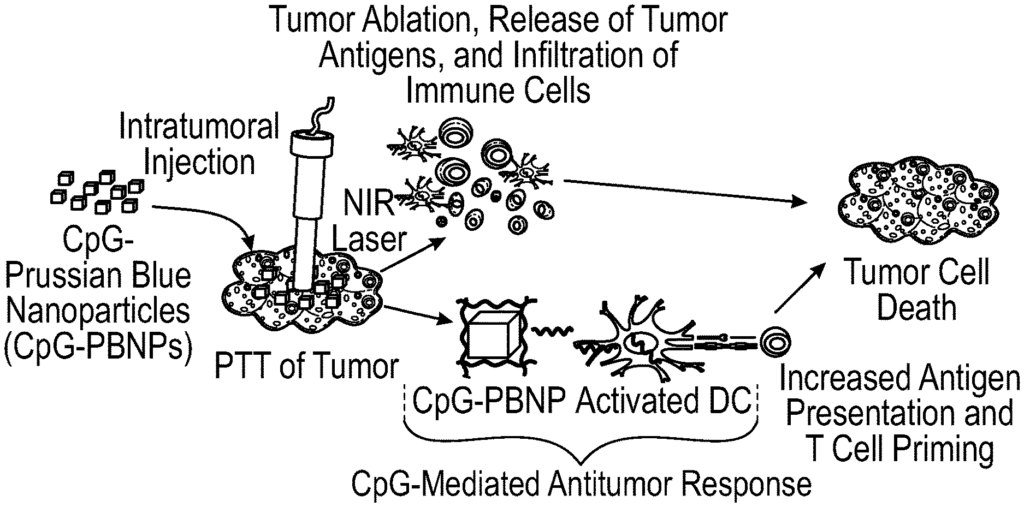Harness the Power of Immuno-Nanotechnology for Targeted Therapy
Introduction
In the rapidly advancing world of medicine, the fusion of immunotherapy with nanotechnology is providing extraordinary possibilities for treating diseases, especially cancer. Our breakthrough innovation centers on Prussian blue nanoparticles functionalized with immune signals—an approach designed to revolutionize how the body recognizes and combats harmful cells, particularly in cancer treatments. This is a technology that opens the door to next-level therapies, where precision meets immune activation.
The Challenge
Conventional cancer treatments such as chemotherapy and radiation have long been associated with broad side effects, limited effectiveness, and often, the inability to fully target cancer cells while preserving healthy ones. Although immunotherapies have shown promise, the delivery methods often face challenges in reaching the desired location with the correct therapeutic response. The need for a targeted, effective, and patient-friendly treatment is clear.
The Solution
Our patent introduces Prussian blue nanoparticles functionalized with immune signals, creating a platform that actively recruits and enhances the immune system’s ability to target diseased cells. By leveraging these nanoparticles, this technology delivers a dual function: it activates the body’s natural immune defense while providing precise localization of therapeutic action.
This innovative approach offers a more targeted response with fewer off-target effects. Nanoparticles are engineered to home in on cancerous tissues, ensuring that immune signals are sent exactly where they’re needed, leading to an efficient immune response that directly combats the disease at its source.
Key Benefits
- Enhanced Immune Activation: The nanoparticles are functionalized with immune signals that significantly boost the body’s natural defense mechanisms. By focusing immune cells on the diseased area, it leads to more effective tumor destruction or disease control.
- Precision Targeting: Unlike traditional treatments, this technology ensures that immune signals are sent precisely to the affected area. The Prussian blue nanoparticles act as a transport system, delivering immune-stimulating agents directly to the disease site, ensuring minimal damage to healthy tissue.
- Reduced Side Effects: With the immune response localized to the cancerous area, there are fewer systemic side effects than traditional therapies, making this approach safer and more tolerable for patients.
- Broad Applications: While particularly promising in cancer treatment, this technology’s applications extend to other immune-related conditions, offering a versatile platform for addressing a range of diseases.
Why License This Technology?
Licensing this groundbreaking technology presents an exceptional opportunity for companies to lead the charge in precision medicine. This technology harnesses the combined power of immune modulation and nanotechnology to offer treatments that are not only innovative but also more efficient and patient-friendly than existing options.
As the field of immunotherapy continues to grow, the demand for targeted treatments that minimize collateral damage while maximizing therapeutic outcomes is skyrocketing. By integrating this technology into your product line, you position your company at the forefront of the next wave of medical advancements.
Conclusion
Nanotechnology and immunotherapy are no longer separate domains—they are converging to create a powerful solution for targeted disease treatment. By licensing this innovation, you’re offering patients a more effective, safer, and precise approach to healthcare. Unlock the potential of immuno-nanotechnology and lead the next era of medical treatments.

- Abstract
- Claims
What is claimed is:
1. A biofunctionalized nanocomposite, comprising:
3. The biofunctionalized nanocomposite of claim 1, wherein the Prussian blue materials are represented by general formula (I):
AxByM4[M′(CN)6]z ·nH2O (I)
wherein:
Share
Title
Prussian blue nanoparticles functionalized with immune signals and applications thereof
Inventor(s)
Rohan Fernandes, Elizabeth Sweeney, Juliana Cano-Mejia
Assignee(s)
George Washington University
Patent #
11672861
Patent Date
June 13, 2023
